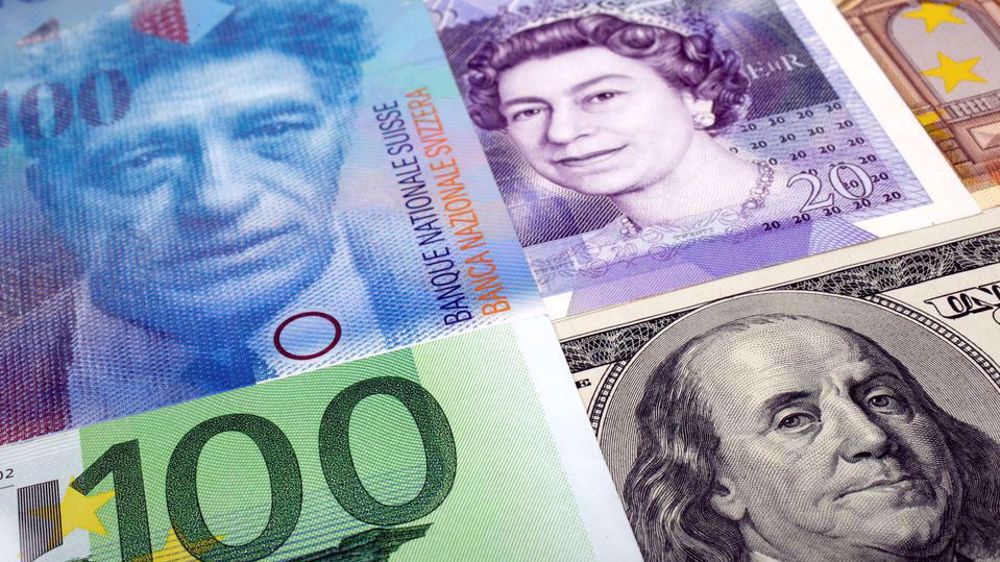Dollar falls; yen and Swiss franc gain in post-Omicron gyrations
The US dollar fell on Wednesday morning in trading that saw the safe-haven yen and Swiss franc appreciate even as the risk-on British and Australian currencies rebounded from lows the day before.
The moves underlined the fragility of the calm that seemed to have settled over the foreign exchange markets earlier in the day.
Traders are weighing what the new Omicron variant of the coronavirus might do to plans that Federal Reserve Chair Jerome Powell signaled on Tuesday to move more quickly to raise US interest rates.
The dollar index, which measures the greenback against major currencies was down 0.3% on the day at 95.682 at 10:07 ET (1507 GMT), losing a similar amount to the Japanese yen and falling 0.1% against the Swiss franc.
The British pound, often considered a risk-on currency, was up nearly 0.4% at $1.3344. The pound on Tuesday had been knocked to its lowest level in nearly a year by fears over vaccine effectiveness against the Omicron variant.
“We've gotten these conflicting claims about the new variant, and Powell's comments really threw the markets for a loop,” said Marc Chandler, chief market strategist at Bannockburn Global Forex.
“People are still pretty nervous,” Chandler said.
Powell said on Tuesday that the risk of inflation had increased and he signaled the central bank may accelerate its bond-buying taper at its meeting later this month.
The dollar showed little initial reaction on Wednesday morning to the ADP report on US private payrolls. It showed an increase of 534,000 jobs last month, slightly higher than the 525,000 jobs that economists polled by Reuters had forecast.
“It means another solid jobs report” on Friday when the US government posts more comprehensive payroll numbers, Chandler said. “Friday's US jobs data is the next big thing.”
The greenback is up 6% this year. November was its strongest month since June.
The euro was up 0.2% on the day at $1.1356 at 10:07 a.m. ET (1507 GMT).
Euro-dollar volatility gauges reached their highest levels of the year on Monday amid the conflicting virus and interest rate signals. The Omicron variant could slow Fed tightening and thus be good for the euro, ING strategists wrote in a client note.
“Both themes will be fed many fresh inputs over the next four weeks and thinning liquidity conditions point to bumpy conditions in FX markets,” ING said.
Prior to the tailspin caused by Omicron's advent, the main driver of exchange rates had been expectations of the different speeds at which central banks will raise interest rates.
The Australian and New Zealand dollars also made gains, lifting them from one-year lows. The Aussie was up 0.5% at $0.7168 and the kiwi was up 0.6% at $0.6866.
The Chinese yuan , a beacon of resilience in a turbulent few days, touched a six-month high of 6.3596 per dollar after better-than-expected November manufacturing data.
In cryptocurrencies, bitcoin was up about 2% at $57,885 at 9:04 ET (1404 GMT).
(Source: Reuters)
Hamas hails Gaza’s victory over Israel in genocidal war, its forcing enemy to agree to ceasefire
'Capitulation': Israeli officials and media concede Gaza defeat as truce unfolds
'Gaza has won': Social media users react to ceasefire with mix of relief, joy
Iran seeks South Korea’s assistance for AI, fiber-optic projects
VIDEO | Iran's 'Eqtedar' (Power) maneuver
Israel hits HTS military target in Syria for 1st time since fall of Assad
VIDEO | Press TV's news headlines
Israel has slaughtered 13,000 students in Gaza, West Bank











 This makes it easy to access the Press TV website
This makes it easy to access the Press TV website